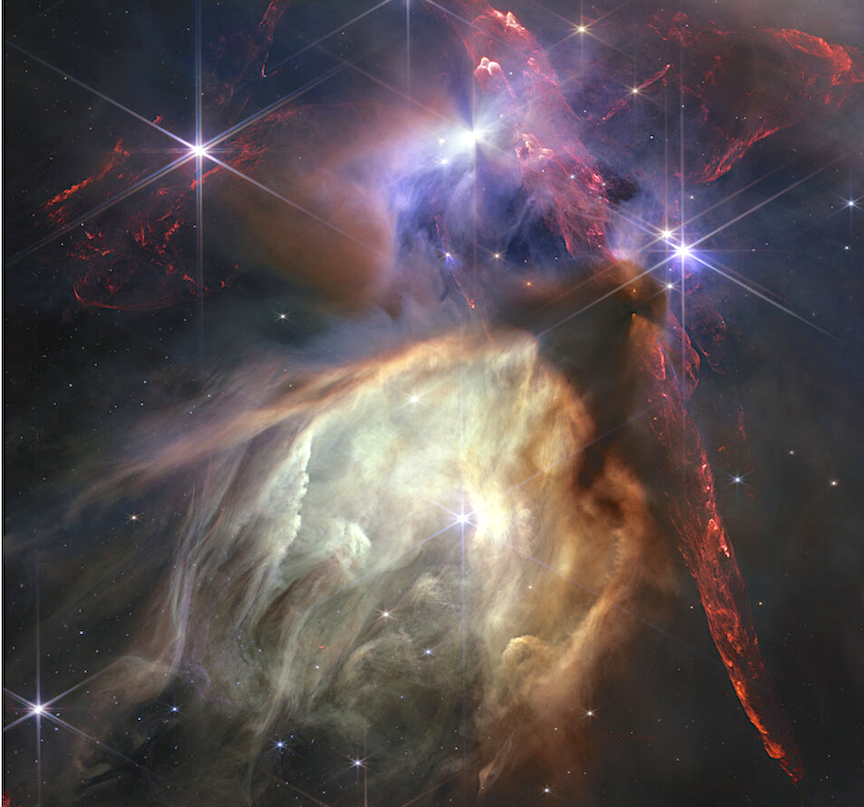
The European Space Agency issued the following announcement:

From our cosmic backyard in the Solar System to distant galaxies near the dawn of time, the NASA/ESA/CSA James Webb Space Telescope has delivered on its promise of revealing the Universe like never before in its first year of science operations. To celebrate the completion of a successful first year, a new Webb image has been released of a small star-forming region in the Rho Ophiuchi cloud complex. While the region is relatively quiet, its proximity at 390 light-years makes for a highly detailed close-up, with no foreground stars in the intervening space.
Webb’s new image shows a region containing approximately 50 young stars, all of them similar in mass to the Sun or smaller. The darkest areas are the densest, where thick dust cocoons still-forming protostars. Huge red bipolar jets of molecular hydrogen dominate the image, appearing horizontally across the upper third and vertically on the right. These occur when a star first bursts through its natal envelope of cosmic dust, shooting out a pair of opposing jets into space. In contrast, the star S1 has carved out a glowing cave of dust in the lower half of the image. It is the only star in the image that is significantly more massive than the Sun.
Some stars in the image display tell-tale shadows indicating protoplanetary discs — potential future planetary systems in the making.
From its very first deep field image unveiled on 11 July 2022, Webb has delivered on its promise to show us more of the Universe than ever before. However, Webb has revealed much more than distant galaxies in the early Universe.
Beyond the stunning infrared images, what really has scientists excited are Webb’s crisp spectra — the detailed information that can be gleaned from light by the telescope’s spectroscopic instruments. Webb’s spectra have confirmed the distances of galaxies, identified the compositions of planet atmospheres (or absence thereof), the chemical makeup of stellar nurseries and protoplanetary discs, and more.
The breadth of Webb science is also apparent in its observations of the region of space we are most familiar with — the Solar System. Faint rings of gas giants appear out of the darkness, accompanied by moons, while in the background Webb shows distant galaxies. By comparing detections of water and other molecules in our Solar System with those found in the discs of much younger planetary systems, Webb is helping to build up clues about our own origins — how Earth became the ideal place for life as we know it.
One year in, Webb’s science mission is really only just getting started. The second year of observations has already been selected, with plans to build on an exciting first year that exceeded expectations.

